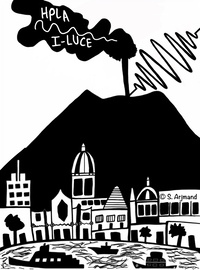Speaker
Description
The European laser user facilities and associated projects underwent an enormous development within the last few years and are of great interest in the perspective of developing the future of scientific research and the integrations of science and applications.
To explore the outlook for European laser user facilities it’s fundamental to consider (but not only) ELI ERIC, EU-XFEL, EPAC, Apollon, Vulcan, CLPU, as well as plasma accelerator projects such as EuPRAXIA and fusion projects like HiPER. The current achievements include the development of sources as 10-20 PW lasers, the installation of beamlines dedicated to applications (particles acceleration, secondary sources, advanced metrology). In addition to the previous elements, the design of fusion related equipment and experiments must be considered in detail.
Consortiums like Laserlab-Europe are critical for collaboration purposes and to contribute to the development of the facilities’ ecosystem. Other facilities, even if not strictly laser-based or opened to users, must be considered, such as SwissFEL and FERMI 2.0, as well as HiLASE and HZDR-Draco.
The overview of the perspectives cannot be complete without a detailed consideration of the manufacturing and industrial scientific laser capabilities, considering the principal and secondary suppliers. To complete the industrial aspect of this overview, the existing and emerging laser technologies (Titanium Sapphire, Ytterbium, Thulium, Alexandrite) for scientific applications of laser secondary sources must be listed. Also, a mention of the facilities out of Europe (North America, Indian, Asia) is considered.
To conclude, we consider that the European laser user facilities and associated projects, here presented, represent an enormous potential for the future of science and applications.

